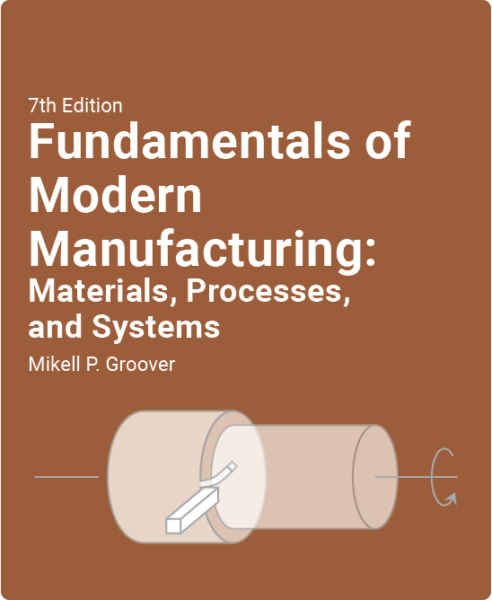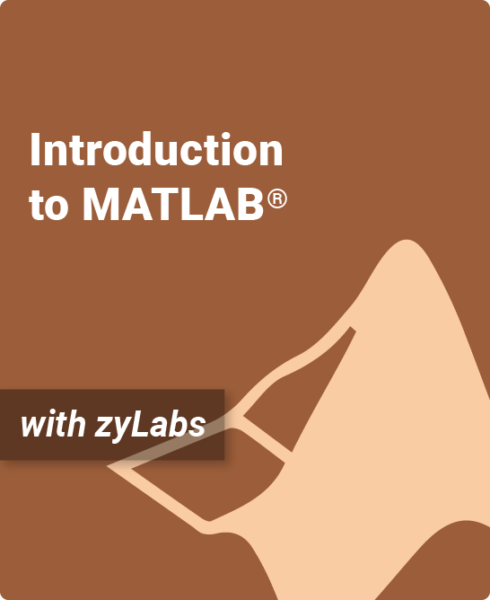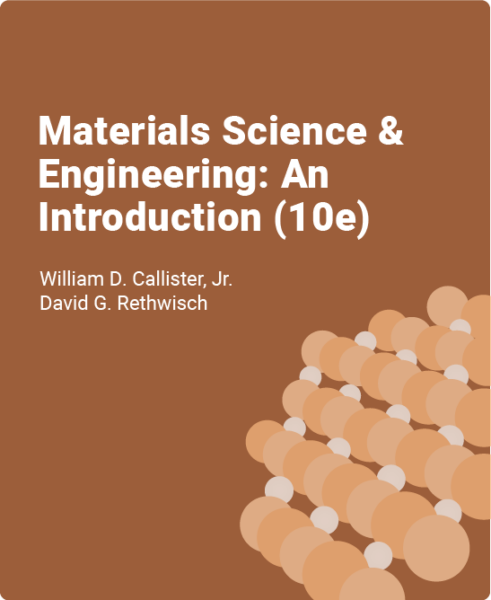Table of Contents
1. Introduction and Overview of Manufacturing
1.1 What is manufacturing?
1.2 Materials in manufacturing
1.3 Manufacturing processes
1.4 Production systems
1.5 Manufacturing economics
1.6 References
1.7 Chapter review questions
1.8 Problems
2. The Nature of Materials
2.1 Atomic structure and the elements
2.2 Bonding between atoms and molecules
2.3 Crystalline structures
2.4 Noncrystalline (amorphous) structures
2.5 Engineering materials
2.6 References
2.7 Chapter review questions
3. Mechanical Properties of Materials
3.1 Stress-strain relationships
3.2 Hardness
3.3 Effect of temperature on properties
3.4 Fluid properties
3.5 Viscoelastic behavior of polymers
3.6 References
3.7 Chapter review questions
3.8 Problems
4. Physical Properties of Materials
4.1 Volumetric and melting properties
4.2 Thermal properties
4.3 Mass diffusion
4.4 Electrical properties
4.5 Electrochemical processes
4.6 References
4.7 Chapter review questions
4.8 Problems
5. Dimensions, Surfaces, and Their Measurement
5.1 Dimensions, tolerances, and related attributes
5.2 Conventional measuring instruments and gages
5.3 Surfaces
5.4 Measurement of surfaces
5.5 Effect of manufacturing processes
5.6 References
5.7 Chapter review questions
6. Metals
6.1 Alloys and phase diagrams
6.2 Ferrous metals
6.3 Nonferrous metals
6.4 Superalloys
6.5 References
6.6 Chapter review questions
6.7 Problems
7. Ceramics
7.1 Structure and properties of ceramics
7.2 Traditional ceramics
7.3 New ceramics
7.4 Glass
7.5 Some important elements related to ceramics
7.6 References
7.7 Chapter review questions
8. Polymers
8.1 Fundamentals of polymer science and technology
8.2 Thermoplastic polymers
8.3 Thermosetting polymers
8.4 Elastomers
8.5 Polymer recycling and biodegradability
8.6 References
8.7 Chapter review questions
9. Composite Materials
9.1 Technology and classification of composite materials
9.2 Metal matrix composites
9.3 Ceramic matrix composites
9.4 Polymer matrix composites
9.5 References
9.6 Chapter review questions
9.7 Problems
10. Fundamentals of Metal Casting
10.1 Overview of casting technology
10.2 Heating and pouring
10.3 Solidification and cooling
10.4 References
10.5 Chapter review questions
10.6 Problems
11. Metal Casting Processes
11.1 Sand casting
11.2 Other expendable-mold casting processes
11.3 Permanent-mold casting processes
11.4 Foundry practice
11.5 Casting quality
11.6 Castability and casting economics
11.7 Product design considerations
11.8 References
11.9 Chapter review questions
11.10 Problems
12. Glassworking
12.1 Raw materials preparation and melting
12.2 Shaping processes in glassworking
12.3 Heat treatment and finishing
12.4 Product design considerations
12.5 References
12.6 Chapter review questions
13. Shaping Processes for Plastics
13.1 Properties of polymer melts
13.2 Extrusion
13.3 Production of sheet and film
13.4 Fiber and filament production (spinning)
13.5 Coating processes
13.6 Injection molding
13.7 Compression and transfer molding
13.8 Blow molding and rotational molding
13.9 Thermoforming
13.10 Casting
13.11 Polymer foam processing and forming
13.12 Product design considerations
13.13 References
13.14 Chapter review questions
13.15 Problems
14. Processing of Polymer Matrix Composites and Rubber
14.1 Overview of PMC processing
14.2 Open-mold processes
14.3 Closed-mold processes
14.4 Other PMC shaping processes
14.5 Rubber processing and shaping
14.6 Manufacture of tires and other rubber products
14.7 References
14.8 Chapter review questions
15. Powder Metallurgy
15.1 Characterization of engineering powders
15.2 Production of metallic powders
15.3 Conventional pressing and sintering
15.4 Alternative pressing and sintering techniques
15.5 Powder metallurgy materials and economics
15.6 Product design considerations in powder metallurgy
15.7 References
15.8 Chapter review questions
15.9 Problems
16. Processing of Ceramics and Cermets
16.1 Processing of traditional ceramics
16.2 Processing of new ceramics
16.3 Processing of cermets
16.4 Product design considerations
16.5 References
16.6 Chapter review questions
17. Fundamentals of Metal Forming
17.1 Overview of metal forming
17.2 Material behavior in metal forming
17.3 Temperature in metal forming
17.4 Strain rate sensitivity
17.5 Friction and lubrication in metal forming
17.6 References
17.7 Chapter review questions
17.8 Problems
18. Bulk Deformation Processes in Metal Working
18.1 Rolling
18.2 Forging
18.3 Extrusion
18.4 Wire and bar drawing
18.5 References
18.6 Chapter review questions
18.7 Problems
19. Sheet Metalworking
19.1 Cutting operations
19.2 Bending operations
19.3 Drawing
19.4 Equipment and economics for sheet-metal pressworking
19.5 Other sheet-metal-forming operations
19.6 Sheet-metal operations not performed on presses
19.7 Bending of tube stock
19.8 References
19.9 Chapter review questions
19.10 Problems
20. Theory of Metal Machining
20.1 Overview of machining technology
20.2 Theory of chip formation in metal machining
20.3 Force relationships and the Merchant equation
20.4 Power and energy relationships in machining
20.5 Cutting temperature
20.6 References
20.7 Chapter review questions
20.8 Problems
21. Machining Operations and Machine Tools
21.1 Machining and part geometry
21.2 Turning and related operations
21.3 Drilling and related operations
21.4 Milling
21.5 Machining centers and turning centers
21.6 Other machining operations
21.7 Machining operations for special geometries
21.8 High-speed machining
21.9 References
21.10 Chapter review questions
21.11 Problems
22. Cutting-Tool Technology
22.1 Tool life
22.2 Tool materials
22.3 Tool geometry
22.4 Cutting fluids
22.5 References
22.6 Chapter review questions
22.7 Problems
23. Economic and Product Design Considerations in Machining
23.1 Machinability
23.2 Tolerances and surface finish
23.3 Machining economics
23.4 Product design considerations in machining
23.5 References
23.6 Chapter review questions
23.7 Problems
24. Grinding and Other Abrasive Processes
24.1 Grinding
24.2 Related abrasive processes
24.3 References
24.4 Chapter review questions
24.5 Problems
25. Nontraditional Machining and Thermal Cutting Processes
25.1 Mechanical energy processes
25.2 Electrochemical machining processes
25.3 Thermal energy processes
25.4 Chemical machining
25.5 Application considerations
25.6 References
25.7 Chapter review questions
25.8 Problems
26. Heat Treatment of Metals
26.1 Annealing
26.2 Martensite formation in steel
26.3 Precipitation hardening
26.4 Surface hardening
26.5 Heat treatment methods and facilities
26.6 References
26.7 Chapter review questions
27. Surface Processing Operations
27.1 Industrial cleaning processes
27.2 Diffusion and ion implantation
27.3 Plating and related processes
27.4 Conversion coating
27.5 Vapor deposition processes
27.6 Organic coatings
27.7 Porcelain enameling and other ceramic coatings
27.8 Thermal and mechanical coating processes
27.9 References
27.10 Chapter review questions
27.11 Problems
28. Fundamentals of Welding
28.1 Overview of welding technology
28.2 The weld joint
28.3 Physics of welding
28.4 Features of a fusion-welded joint
28.5 References
28.6 Chapter review questions
28.7 Problems
29. Welding Processes
29.1 Arc welding
29.2 Resistance welding
29.3 Oxyfuel gas welding
29.4 Other fusion-welding processes
29.5 Solid-state welding
29.6 Weld quality
29.7 Weldability and welding economics
29.8 Design considerations in welding
29.9 References
29.10 Chapter review questions
29.11 Problems
30. Brazing, Soldering, and Adhesive Bonding
30.1 Brazing
30.2 Soldering
30.3 Adhesive bonding
30.4 References
30.5 Chapter review questions
31. Mechanical Assembly
31.1 Threaded fasteners
31.2 Rivets and eyelets
31.3 Assembly methods based on interference fits
31.4 Other mechanical fastening methods
31.5 Molding inserts and integral fasteners
31.6 Design for assembly
31.7 References
31.8 Chapter review questions
31.9 Problems
32. Additive Manufacturing
32.1 Fundamentals of additive manufacturing
32.2 Additive manufacturing technologies
32.3 Cycle time and cost analysis
32.4 Additive manufacturing applications
32.5 References
32.6 Chapter review questions
32.7 Problems
33. Processing of Integrated Circuits
33.1 Overview of IC processing
33.2 Silicon processing
33.3 Lithography
33.4 Layer processes used in IC fabrication
33.5 Integrating the fabrication steps
33.6 IC packaging
33.7 Yields in IC processing
33.8 References
33.9 Chapter review questions
33.10 Problems
34. Electronics Assembly and Packaging
34.1 Electronics packaging
34.2 Printed circuit boards
34.3 Printed circuit board assembly
34.4 Electrical connector technology
34.5 References
34.6 Chapter review questions
35. Microfabrication Technologies
35.1 Microsystem products
35.2 Microfabrication processes
35.3 References
35.4 Chapter review questions
36. Nanofabrication Technologies
36.1 Nanotechnology products and applications
36.2 Introduction to nanoscience
36.3 Nanofabrication processes
36.4 References
36.5 Chapter review questions
37. Automation Technologies for Manufacturing Systems
37.1 Automation fundamentals
37.2 Hardware for automation
37.3 Computer numerical control
37.4 Industrial robotics
37.5 References
37.6 Chapter review questions
37.7 Problems
38. Integrated Manufacturing Systems
38.1 Material handling
38.2 Fundamentals of production lines
38.3 Manual assembly lines
38.4 Automated production lines
38.5 Cellular manufacturing
38.6 Flexible manufacturing systems
38.7 Computer-integrated manufacturing
38.8 References
38.9 Chapter review questions
38.10 Problems
39. Process Planning and Production Control
39.1 Process planning
39.2 Other manufacturing engineering functions
39.3 Production planning and control
39.4 Just-in-time delivery systems
39.5 Lean production
39.6 References
39.7 Chapter review questions
40. Quality Control and Inspection
40.1 Product quality
40.2 Process capability and tolerances
40.3 Statistical process control
40.4 Quality programs in manufacturing
40.5 Inspection principles
40.6 Modern inspection technologies
40.7 References
40.8 Chapter review questions
40.9 Problems
41. Standard Units Used In This Book
41.1 Standard units used in this book
42. Abbreviations Used In This Book
42.1 Abbreviations used in this book
43. Index
43.1 Index
The interactive zyBooks version of a classic manufacturing processes text
The Fundamentals of Modern Manufacturing zyVersion offers the complete contents of the 7th edition of this popular textbook, plus engages students with new interactive animations, questions, and activities.
- Assignable and trackable reading and problems help incentivize student interaction with the content
- 184 dynamic animations bring hard-to-visualize processes and concepts to life
- More than 1,000 interactive questions make up 358 learning question sets helping students understand topics through interactive steps, keeping them engaged, and providing thorough explanations of both right and wrong answers
- Over 161 Challenge Activities (“homework problems”) with 232 randomized questions for key chapters
- More than 900 test bank questions that instructors can use in Word or their LMS
A practical approach to manufacturing processes that focuses on real-world engineering applications while providing context, engagement, and motivation for students.
The interactive Fundamentals of Modern Manufacturing zyBook in action:
Moving from Plug-and-Chug to Intuition in Manufacturing Courses — Online Workshop
What is a zyVersion?
zyVersions are leading print titles converted and adapted to zyBooks’ interactive learning platform, allowing for a quick and easy transition to an engaging digital experience for instructors and students.
zyBooks’ web-native content helps students visualize concepts to learn faster and more effectively than with a traditional textbook. (Check out our research.)
This zyVersion of Fundamentals of Modern Manufacturing benefits both students and instructors:
- Instructor benefits
- Customize your course by reorganizing existing content or adding your own
- Continuous publication model updates your course with the latest content and technologies
- Robust reporting gives you insight into students’ progress, reading and participation
- Animations and other interactive content can be shown in presentation mode and used during a lecture
- Student benefits
- Learning questions and other content serve as an interactive form of reading
- Instant feedback on labs and homework
- Concepts come to life through extensive animations embedded into the interactive content
- Save chapters as PDFs to reference the material at any time
Authors
Mikell P. Groover / Lehigh University
Key Contributors
Greg Mason / Content Developer / zyBooks, A Wiley Brand
Ryan Barlow / Senior Content Developer / zyBooks, A Wiley Brand
Adrian Rodriguez / Senior Content Developer / zyBooks, A Wiley Brand



